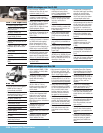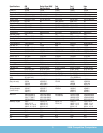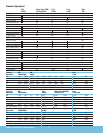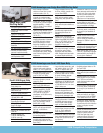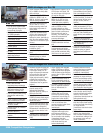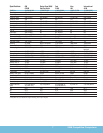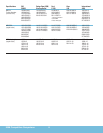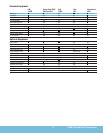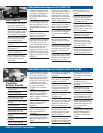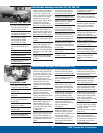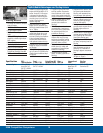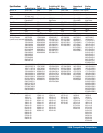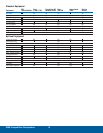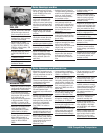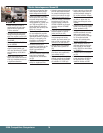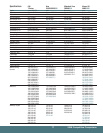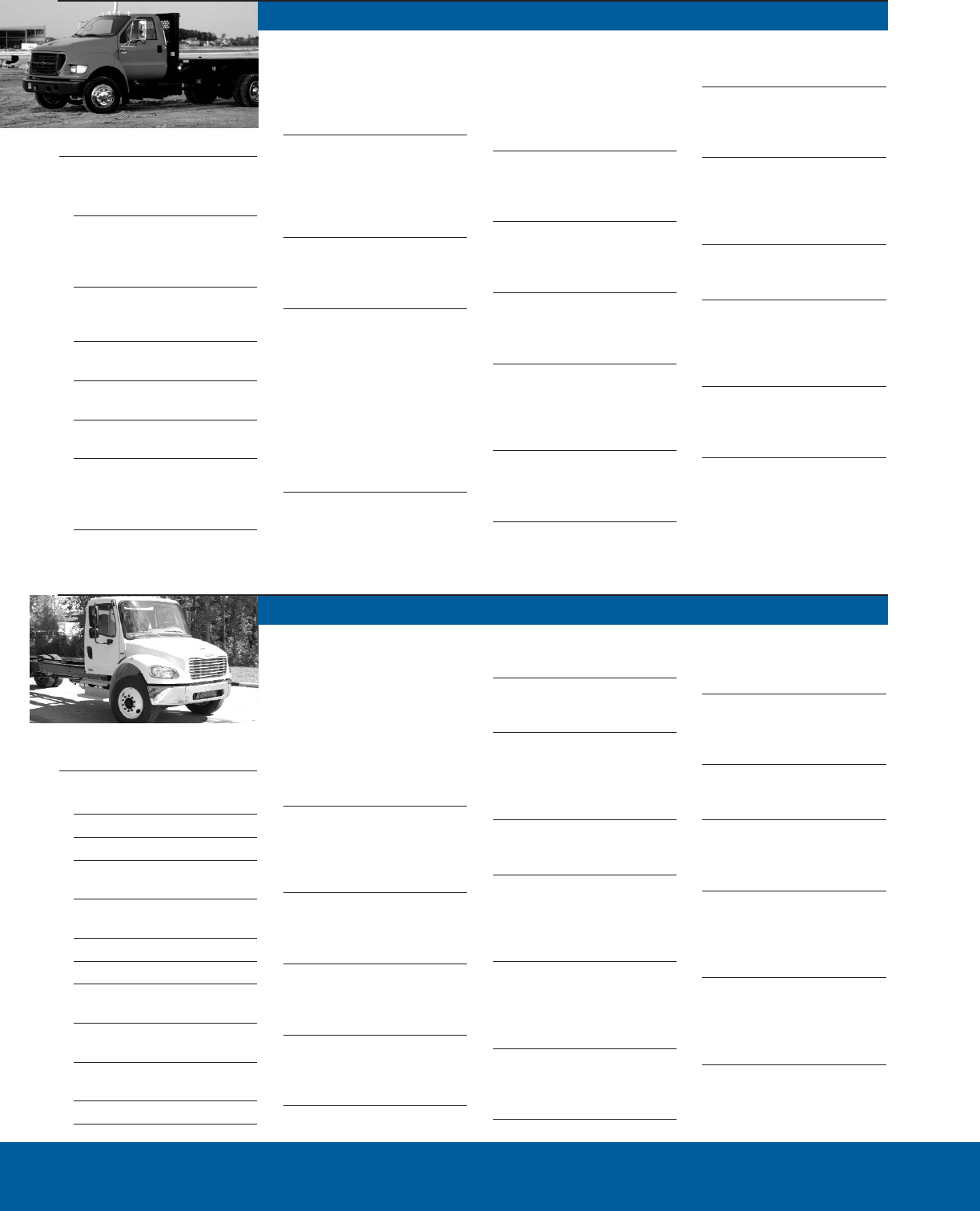
2008 Competitive Comparison 10
Ford F-650/750
» The F-650 and F-750 medium
duty trucks compete with the
C6500 and C7500 GM products
» Ford trucks are produced by
International in Mexico, under a
joint venture agreement called
Blue Diamond Truck Company
» International frames, suspen-
sions and other components
are used with a Ford cab
» Regular cab, Super Cab and
Crew Cab
» 2 engine choices: Cummins ISB
and Caterpillar C7
» F-650 offers preconfigured
26,000 lb. GVWR trucks
• Many wheelbase choices for
F-Series, now that it is based
on International frame and
suspensions
• Tighter turning diameter (curb-
to-curb) for comparable cab-to-
axle means less maneuvering
time (49.4 ft./188 in. WB vs.
57.9 ft./194 in. WB with same
120-in. CA)
• Cowl-mounted, composite mir-
rors with integral convex mirror
offer heat and power, for driver
vision and ease of use (door-
mounted West Coast mirrors on
Ford)
• Standard TranSynd synthetic
transmission lubricant vs.
optional on Ford, for greater
value and low downtime
• Standard commercial-grade gas
engine has 295 hp and 440 lb.-
ft. of torque. Vortec 8.1L V8
engine is prepared for alternate
fuel conversions. Gas engine
provides lower initial cost,
higher payload capacity, readily
available fuel sources and sim-
ple service requirements (a gas
engine is not available on Ford
F-650/750)
• C-Series instrument panel is
designed for medium duty truck
needs, with room for GM-sup-
plied switches to meet voca-
tional needs. Ford uses pickup-
style instrument panel with no
room for added switches
• Better visibility (Sightline to
ground 15.4 ft. for C-Series vs.
19.2 ft. for Ford) contributes to
safety and maneuverability
• Oil life monitor reminds drivers
of service needs, contributing
to a long life (not available on
Ford)
• Better in-cab storage, with
door-sill boxes and center
console (Ford has no door-sill
boxes)
• 3-point cab mount with avail-
able Hystec mounts contribute
to a smooth, quiet ride (Hystec
mounts are not available on
Ford)
• Priority Access Service System
provides easier engine access,
helping reduce downtime (limit-
ed engine access on Ford)
• More leg room (41.1 in. vs.
40.7 in for Ford) for driver
comfort
• Road speed governor standard
with gas engine, available on
diesels, for vehicle management
(not available on Ford)
• Longer available diesel engine
warranty (3 years unlimited
miles with Duramax vs. 2 years
unlimited miles on Ford’s stan-
dard Cummins diesel)
• Greater choice of wheelbase
lengths helps reduce need to
have frame cut or welded
• Opposed-piston hydraulic brake
calipers offer long life, easy
service and powerful braking
(Ford uses sliding pin, single-
piston brake calipers)
• Progressive spring aids help
cushion load and chassis from
impacts when suspension bot-
toms (Not available on Ford)
Freightliner
Business Class M2
» Full range of GVWR to compete
with all models
» 16,000 lb. GVWR base
» No gas engine available
» 190-hp MBE diesel standard,
available high-power MBE
» Standard Allison 1000 5-speed
automatic
» Numerous options
» Aluminum cab
» Three cab BBC: 100, 106
(standard) and 112 inches
» Numerous vocational spec’ing
packages
» Extended cab and crew cab
availability
» Base price above $65,000
• Standard commercial-grade gas
engine has 295 hp and 440 lb.-
ft. of torque. Vortec 8.1L V8
engine is prepared for alternate
fuel conversions. Gas engine
provides lower initial cost, high-
er payload capacity, readily
available fuel sources and sim-
ple service requirements
(Freightliner has no gasoline
engines)
•
Isuzu 6HK1-TC base diesel
engine is more powerful than
standard Freightliner MBE
diesel, for greater performance
(215 vs. 190 hp)
• Available driver and front pas-
senger air bags contribute to
safety (not available on
Freightliner)
• Cruise controls mounted on
steering column for conve-
nience (dash-mounted on
Freightliner)
• Larger standard fuel capacity
helps refueling frequency and
adds driving range (50 gal. vs.
30 gal.)
• Standard glove box contributes
to cab storage (not available on
Freightliner)
• Standard door-sill storage
offers useful cab storage (not
available on Freightliner)
• Opposed-piston hydraulic brake
calipers offer long life, easy
service and powerful braking
(Freightliner uses sliding pin,
single-piston brake calipers)
• Steel cab is tough and easily
repairable (vs. aluminum
Freightliner cab)
• DEX-COOL engine coolant lasts
up to 5 years or 150,000 miles,
for reduced service costs and
downtime (Freightliner uses
traditional ethylene glycol)
• Rubber-isolated exterior lamps
with no-tool tailamp lens
removal, for easy service and
reduced downtime (not avail-
able on Freightliner)
• Separate driver’s seat for com-
fort (bench seat standard on
Freightliner, with separate driver
and passenger seat optional)
• Available electronic traction
control adds to control on slip-
pery surfaces (not available on
Freightliner)
• Standard synthetic lubricant in
transmission and axle
(Freightliner charges $246 for
this option)
• Standard daytime running
lamps contribute to safety
($123 option on Freightliner)
• Variable-effort ZF steering gear
reduces steering effort in tight
turns (Freightliner has TRW
Ross fixed-effort steering gear)
• Progressive spring aids help
cushion load and chassis from
impacts when suspension bot-
toms (not available on
Freightliner)
• Full-width frame crossmembers
have 8 fasteners per side for
durability vs. 2 fasteners on
Freightliner’s dogbone cross-
members
TopKick/Kodiak Advantages over Ford F-650/F-750
TopKick/Kodiak Advantages over Freightliner Business Class M2



